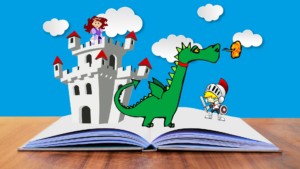Speech and language delays and disorders are not only frustrating for a child, it can lead to low self esteem, poor grades in school, frustration, and even depression.
Early intervention is key to good communication. If you have any concerns about your child not meeting developmental milestones, contact First Words Speech Therapy.
How you can encourage speech development
 Read to your child
Read to your child
Even when they are a baby, reading is very important. It is the foundation for speech and language development.
Have conversations with your child
Before they even start speaking, have conversations with them. They may make sounds, gurgles and coos, keep the conversation going with real words.
Talk about their routines
Talk about their day to day activities, getting dressed, eating breakfast, taking a bath. This not only helps them expand their vocabulary, it is comforting for them to know what to expect.
Though every child develops language and communication at their own rate, the American Speech Language Hearing Association has a milestone chart to understand how many words a child should be saying at a particular age.
3 to 4 Years
Three- to four-year-olds comprehend conceptual words and can put four words as well as several sentences together.
Receptive Language (Understanding)
Responds when called from another room
Understands words for some colors (e.g., red, blue, green)
Understands words for some shapes (e.g., circle, square)
 Understands words for family (e.g., brother, grandmother)
Understands words for family (e.g., brother, grandmother)
Expressive Language (Talking)
Answers simple “who”, “what”, and “where” questions.
Says rhyming words (e.g., hat–cat)
Uses pronouns (e.g., you, me, we, they)
Uses some plural words (e.g., toys, birds, buses)
Is understood by most people
Asks “when” and “how” questions
Puts 4 words together. May make some mistakes (e.g., “I goed to school”)
Talks about what happened during the day. Uses about 4 sentences at a time.
4 to 5 Years
By around age 5, children can follow longer directions and can express themselves with complex sentences.
Receptive Language (Understanding)
Understands words for order (e.g., first, next, last)
Understands words for time (e.g., yesterday, today, tomorrow)
Follows longer directions (e.g., “put your pajamas on, brush your teeth, and then pick out a book”)
Follows classroom directions (e.g., “draw a circle on your paper around something you eat”)
Hears and understands most of what he/she hears at home and in school
Expressive Language (Talking)
Says all speech sounds in words. May make mistakes on sounds that are harder to say, (e.g., l, s, r, v, z, ch, sh, and th)
Responds to “What did you say?”
Talks without repeating sounds or words most of the time
Names letters and numbers
Uses sentences that have more than 1 action word (e.g., jump, play, get). May make some mistakes (e.g., “Zach gots 2 video games, but I got one”)
Tells a short story
Keeps a conversation going
Talks in different ways, depending on the listener and place (e.g., may use short sentences with younger children, may talk louder outside than inside)


